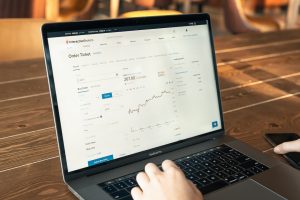Forex Costs: Understanding Spread, Commission, and Swap Fees
When it comes to trading forex, it’s essential to understand the various costs involved. These costs can significantly impact your trading performance and profitability. In this article, we will delve into three common forex costs: spread, commission, and swap fees.
Spread: The Cost of Market Liquidity
The spread is the primary cost associated with forex trading. It refers to the difference between the bid price and the ask price of a currency pair. The bid price is the price at which you can sell the base currency, while the ask price is the price at which you can buy the base currency.
For example, if the bid price for EUR/USD is 1.2000, and the ask price is 1.2002, the spread is 2 pips. Pips are the smallest unit of price movement in forex, typically representing the fourth decimal place for most currency pairs.
The spread exists because forex brokers act as intermediaries between traders and the interbank market, where currencies are traded. Brokers earn their profits from the spread, and it can vary significantly between brokers and currency pairs. Major currency pairs, such as EUR/USD, tend to have lower spreads, while exotic currency pairs may have wider spreads.
A tight spread is generally preferable, as it reduces the cost of trading and enhances profitability. However, it’s important to note that spreads can widen during volatile market conditions or news events. As a trader, it’s crucial to factor in the spread when entering and exiting trades to ensure you’re not starting at a disadvantage.
Commission: Transparent Trading Costs
While the spread is the primary way brokers earn their profits, some brokers charge a commission in addition to the spread. Commission-based pricing models are more common in the forex market’s institutional segment but are also offered by certain retail brokers.
Commission charges are typically stated as a fixed amount per lot traded. For example, if your broker charges $5 per lot and you trade one standard lot (100,000 units of the base currency), you would pay $5 in commission for each round-turn trade (opening and closing a position).
Commission-based pricing models can be beneficial for traders who frequently trade large volumes, as the spread component may be narrower compared to brokers with wider spreads but no commission. However, for smaller retail traders, the impact of commissions on trading costs may be more significant.
Swap Fees: Overnight Financing Costs
Forex trading involves buying one currency and simultaneously selling another. When you hold a position overnight, you incur swap fees, also known as rollover or overnight financing costs. Swap fees are determined by the interest rate differential between the two currencies in the currency pair.
Currencies are associated with different interest rates set by central banks. If the currency you are buying has a higher interest rate than the one you are selling, you will earn a positive swap fee. Conversely, if the currency you are buying has a lower interest rate, you will pay a negative swap fee.
Swap fees are typically calculated and applied at 5:00 PM Eastern Standard Time (EST). If you have a position open at that time, the swap fee will be debited or credited to your account. However, swap fees can vary between brokers, and some brokers may also charge an additional administrative fee for holding positions overnight.
It’s important to note that swap fees can significantly impact the profitability of long-term trades. Therefore, it’s essential to consider and understand the swap fees associated with your chosen currency pairs, especially if you plan to hold positions for an extended period.
Conclusion
Understanding the various costs involved in forex trading is crucial for traders to effectively manage their risk and maximize profitability. The spread, commission, and swap fees are the primary components of forex costs.
When selecting a forex broker, it’s essential to consider not only the spread but also the commission structure and swap fees. Traders should assess their trading style, volume, and goals to determine which pricing model is most suitable for their needs.
By having a comprehensive understanding of the costs associated with forex trading, traders can make informed decisions and develop effective trading strategies that align with their financial objectives.





